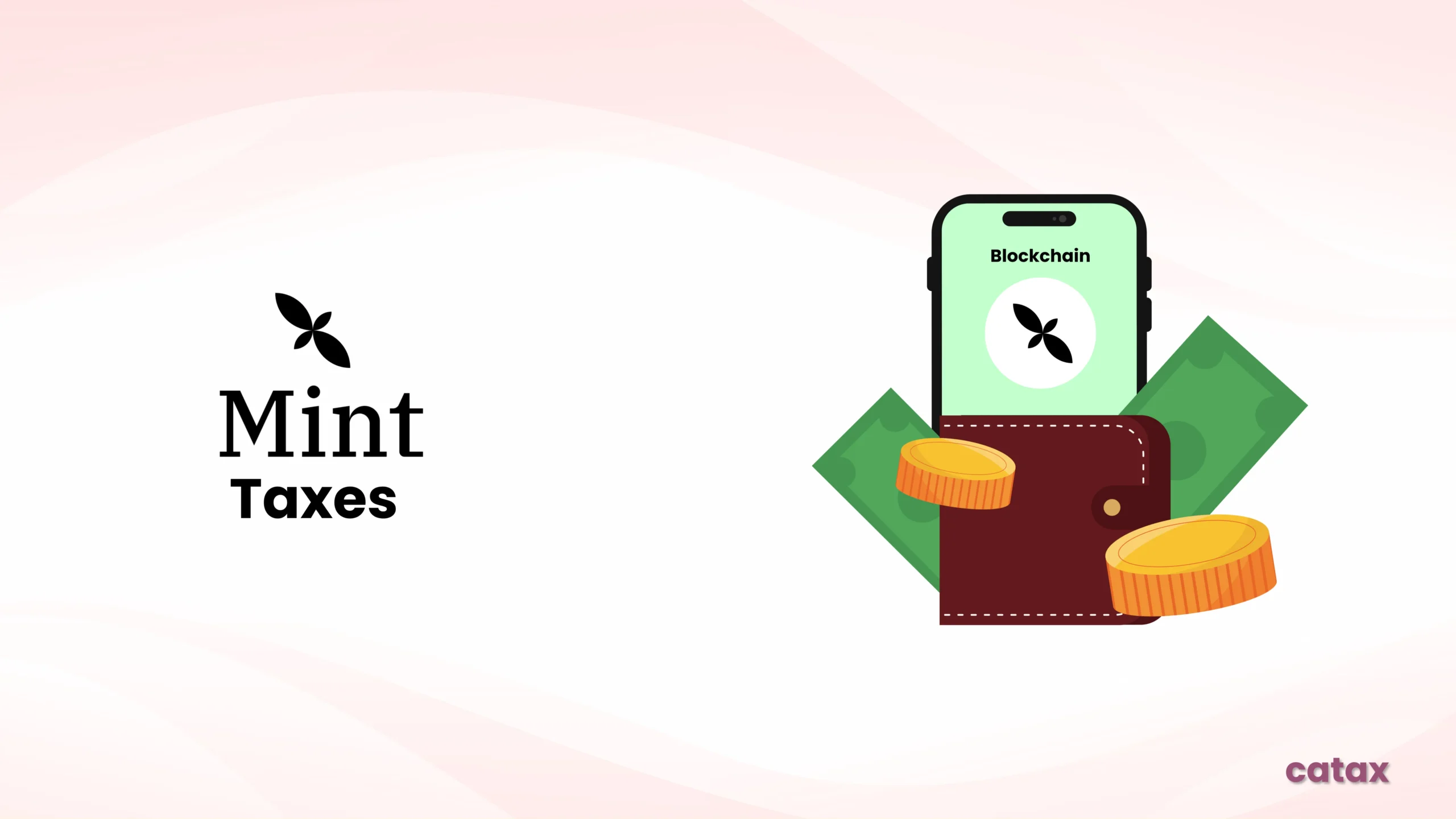Cryptocurrency tax rules vary by country, and Mint (MINT) taxes transactions may be taxed differently depending on local regulations. Whether you buy, sell, trade, or stake MINT, understanding how tax authorities classify these actions helps you stay compliant and avoid penalties.
This guide breaks down Mint tax rules so you can manage your crypto taxes confidently and stay aligned with legal requirements.
How to Connect Your Mint Wallet to Catax?
To easily track your Mint (MINT) transactions and calculate taxes, follow these steps to connect your wallet to Catax:
- Open your Mint wallet or use a supported block explorer (such as MetaMask, Ledger, or any compatible Mint wallet).
- Copy your public wallet address from your Mint wallet.
On Catax:
- Log in to your Catax account and select your country.
- Choose Chain, then search for Mint Wallet.
- Paste your public wallet address and click Connect.
Once connected, Catax will automatically import your MINT transactions and help you streamline your crypto tax reporting.
Calculate My Taxes ➤Are Mint (MINT) Transactions Taxable?
Yes, in most countries, Mint (MINT) transactions are taxable. Depending on how you use MINT, tax authorities may classify it as a capital asset, property, or income.
When Do You Have to Pay Taxes on Mint (MINT)?
You may be required to pay taxes in the following scenarios:
- Selling MINT for a profit – If you sell MINT for more than you paid, the profit is typically taxed as capital gains.
- Trading MINT for another crypto – Swapping MINT for Bitcoin, Ethereum, or other tokens is often considered a taxable event.
- Using MINT for purchases – If you use MINT to buy goods or services, you may incur capital gains tax if the token appreciated in value.
- Earning MINT from staking or rewards – MINT earned this way is usually taxed as income at the time you receive it.
- Receiving MINT as payment – If you’re paid in MINT, the amount is typically taxed as income based on the fair market value at the time of receipt.
Tax treatment varies by jurisdiction, so check your local crypto tax regulations.
Can You Deduct Trading Fees and Other Costs?
Whether you can deduct fees or other expenses related to managing MINT depends on your country’s tax laws.
Some countries allow deductions for:
- Trading fees when buying or selling MINT
- Network fees for transferring MINT between wallets
Other jurisdictions may only allow:
- The original purchase cost (your cost basis), without deducting additional expenses.
Always consult your country’s tax code or a tax advisor to determine eligible deductions.
How Is Mint (MINT) Taxed Based on Holding Period?
Your tax rate may depend on how long you’ve held your MINT tokens:
- Short-term holdings (less than one year) – Typically taxed at standard income tax rates.
- Long-term holdings (over one year) – Some countries offer reduced tax rates on long-term crypto gains.
- Flat-rate systems – In certain regions, a fixed crypto tax rate applies regardless of holding period.
Understanding your jurisdiction’s tax rules can help you minimize your tax liability and improve your tax strategy.
You can also check out our Country-Specific Guide for Crypto in Your country. This guide provides insights on regulations, tax implications, and compliance measures breifly explained for each country.
How Is Staking Income Taxed?
Staking Mint (MINT) tokens can generate passive income, but how that income is taxed depends on your country’s tax laws. Some countries tax staking rewards as soon as you receive them, while others only apply taxes when you sell or exchange the rewards.
How Countries Tax Staking Rewards
- Taxed as income – In many jurisdictions, staking rewards are treated like regular income. This means you’ll be taxed on the value of the MINT tokens when you receive them, using standard income tax rates.
- Taxed as capital gains – In other regions, taxes only apply when you sell your staking rewards. You’ll owe tax only on the profit made between receiving and selling the MINT tokens.
If you stake MINT, knowing your country’s tax approach helps you plan for tax liabilities—even if you haven’t sold your tokens yet.
Always check your country’s rules before staking Mint to avoid unexpected tax obligations.
Can You Claim Mint (MINT) Losses for Tax Benefits?
Not every trade results in a gain. If you sell MINT at a loss, you might be able to use that loss to reduce your tax bill. Here’s how different tax systems handle crypto losses:
- Loss offsets – Some countries allow you to use crypto losses to offset other capital gains, so you’re only taxed on your net profits.
- Loss carryforward – If you didn’t earn enough profits this year, some governments let you carry forward losses to offset future gains.
- Limited or no deductions – In some places, crypto losses cannot be deducted, meaning you won’t receive any tax relief.
Keep detailed records of your MINT trades and transactions to report losses accurately and claim tax benefits where applicable.
How to Stay Compliant with Mint (MINT) Tax Rules
As crypto regulations evolve, staying compliant is crucial. To avoid penalties and confusion:
- Identify how your country classifies Mint transactions — whether as income, capital gains, or business income.
- Verify which deductions you can claim — including trading fees, staking rewards, network fees, and storage costs.
- Maintain complete records – Keep logs of every Mint (MINT) transaction, including buying, selling, staking, and transfers.
- Use a crypto tax platform like Catax – Catax automatically tracks your MINT transactions and simplifies your tax filings.
- Consult a tax professional – If you’re uncertain about your tax obligations, a qualified expert can guide you through local laws and best practices.
By staying informed and organized, you can manage your Mint taxes effectively and avoid costly errors.
Book a Free Consultation Now →